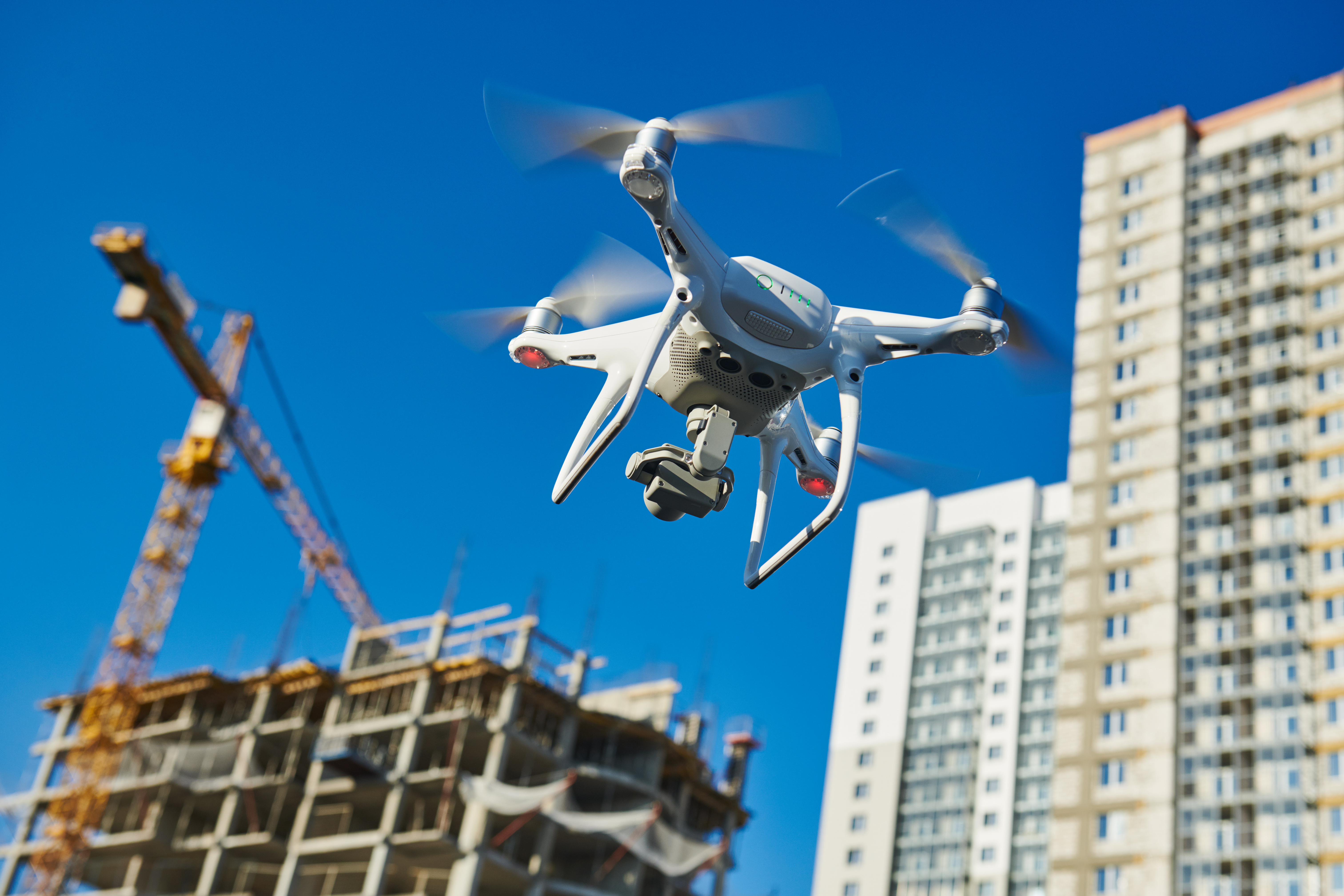The Pros and Cons of Drone Building Inspections
Drones. You’ve most likely seen them flying around, capturing aerial footage at an event. But did you know that drones also have their use within the construction industry? Drone building inspections are fast becoming the preferred method of performing a visual inspection across almost every heavily regulated industry. So, you may be wondering how this works and if it is as good as it sounds? Well, let’s take a look at The Pros and Cons of Drone Building Inspections…
What are drone inspections?
Drone inspections are also known as UAV (Unmanned Aerial Vehicle) inspections. Contractors use drones as part of site assessments and reports.
They allow you to take clear images of properties from all angles, including those difficult and often dangerous spots, such as the roof.
Such inspections are not only speeding up the process but also eliminate liabilities by allowing inspectors to perform their duty safely.


 How drones changed the construction landscape in Australia
How drones changed the construction landscape in Australia
With benefits such as
- efficiency,
- cutting costs,
- streamlining workflow,
- having the ability to provide an aerial vantage point, and
- real-time data,
it’s no surprise why drones have become one of the fastest-growing tools used within the construction industry. Builders and project managers are using drones to improve progress tracking, stay within schedule and cut costs.
Below are some ways the Australian construction industry uses drones
- Topographic mapping and land surveying
- Tracking equipment
- Remote site monitoring
- Internal progress reports
- Security surveillance of equipment
- Site inspection and surveying
 Types of Drones we use for inspections
Types of Drones we use for inspections
Laminar is approved to operate its own drone fleet for asset inspection. We recently acquired our RPA operator’s certificate (ReOC). This means we can now use drone equipment to complement the services we provide.
We use the latest drone technology to inspect customer assets before and after installing equipment and can use the drone indoors and outdoors to scope a project before quoting or inspecting the finished work. Our team can also determine the performance of antennas by reading field strength performance and visually “looking down” the transmission path.
The drones have 5.2k video and 20MP still picture performance, enabling us to record accurate details.
The benefits of using drones for building inspections
Now you know how the construction industry uses drones, let’s consider some of the main benefits.
- Inspect dangerous sites safely: as we’ve discovered, drones can reach difficult spots to gather information safely and easily. This also reduces the risk of any danger to you or your staff.
- Save time and money: it’s known for being the eye in the sky for a reason. So, instead of spending days and weeks trying to reach the top of multi-story buildings with scaffolding – use a drone.
- Get quality data: you can create accurate maps of construction sites through real-time data and high-resolution images.
- Boost clear communication: real-time connectivity enables you to communicate with your team from anywhere while also providing live progress reports.
Risks of Drones for Building Inspections
As the saying goes, “there are two sides to a coin.” The same goes for drone technology. With the pros come the cons. So, let’s take a quick look at some of the downsides.
- You need a license:if you’re getting paid to fly a drone, you need three things
- a remote pilot license
- Civil Aviation Safety Authority (CASA)certified training
- a remotely piloted aircraft operator’s certificate
- Restricted flight zones: there are certain areas you can’t fly drones no matter how big or small, how high or low. To give you a guide, you may wish to check out the CASA-verified drone safety apps.
- Weather dependant:heavy wind, rain, and golf-ball-sized hail stones are no friends of the drone. You risk damage to the drone and the lack of control resulting in poor data.
- Pose the risk of being hacked:all technology comes with the security risks of being hacked. The drone is no exception. Thus, posing a threat to privacy and data security.
- Accident prone:drones are susceptible to crashing into other drones or buildings and structures. This can be very costly, considering the equipment can set you back a few thousand dollars.
Other uses for drones
Whilst we’ve covered the use of drone inspection within the construction industry, this nifty piece of technology is used by various other industries such as
- Oil/gas/utilities – to inspect power lines and wind turbines and even detect gas leaks.
- Military – for intelligence capabilities and effective communication.
- Security – to monitor perimeters and look out for threats.
- Conservation/research – to safely and remotely study environments.
- IT/telecommunications – to safely inspect cell towers.
Contact Laminar for premium drone building inspection services
Contact us today if you require the services of a licensed drone operator for commercial use, such as aerial photography, asset inspections, or other assessments.
